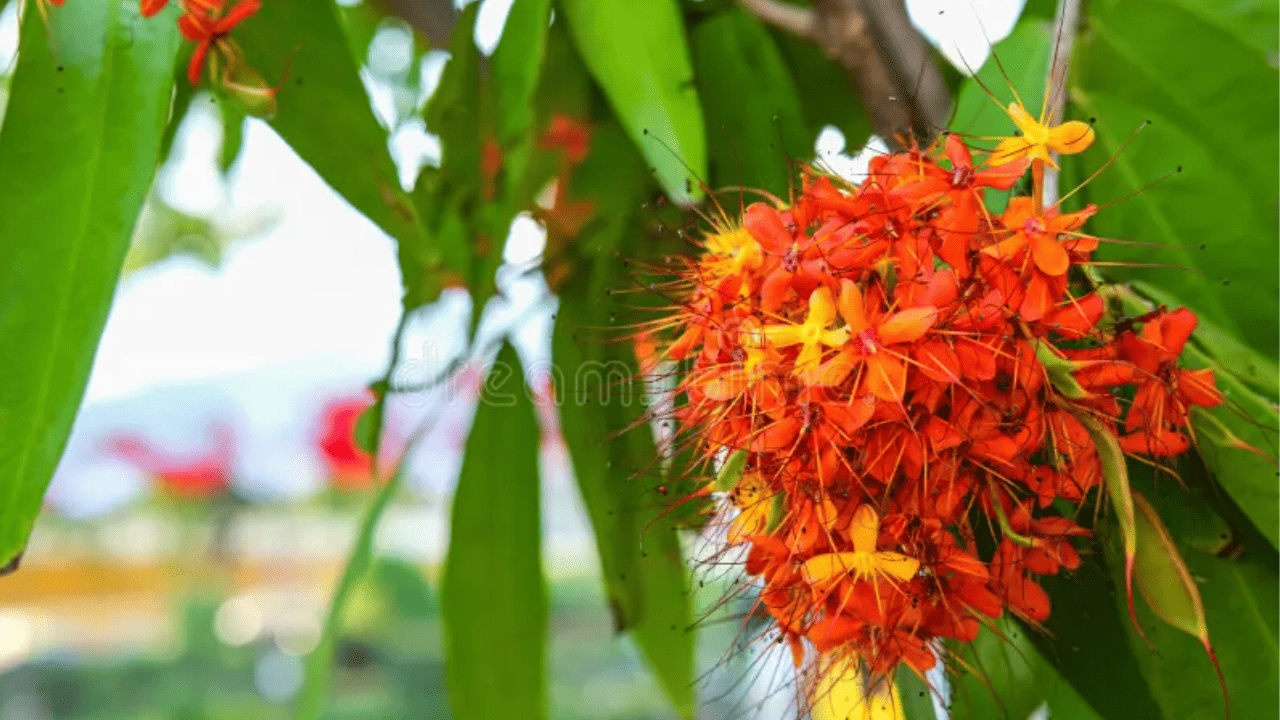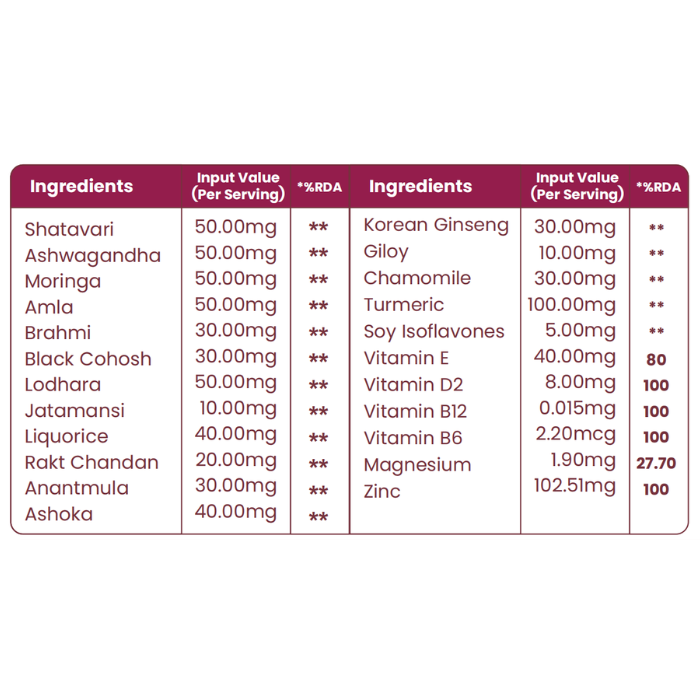Don't miss our holiday offer - up to 10% OFF!
Ashoka for Perimenopause: Natural Support for Hormone Balance

Perimenopause, the years leading up to menopause, is a unique phase in a woman’s life—filled with hormonal fluctuations, unpredictable cycles, and a diverse array of physical, emotional, and cognitive changes.
For centuries, women across South Asia have turned to natural, holistic therapies alongside or instead of conventional medicine. One of the most revered botanicals in Ayurvedic tradition for female wellness is Ashoka (Saraca asoca or Saraca indica), also known as the “Queen of Herbs” for uterine and reproductive health.
This comprehensive guide explores how Ashoka supports women through the challenges of perimenopause, addressing its impact on cycles, mood, vasomotor symptoms, and long-term wellness—drawing from traditional wisdom, emerging science, and practical strategies for daily life.
Understanding Perimenopause: The Need for Holistic Support
Perimenopause typically begins between ages 40-50, but symptoms can appear earlier. Declining and erratic estrogen and progesterone lead to:
- Irregular periods: Heavier, lighter, or unpredictable cycles
- Vasomotor symptoms: Hot flashes, night sweats, palpitations
- Mood changes: Anxiety, low mood, irritability, mood swings
- Sleep disruption: Insomnia, night waking, unrestful sleep
- Physical complaints: Joint aches, headaches, vaginal dryness
- Cognitive shifts: Brain fog and memory lapses
Conventional treatments may not address the multifaceted nature of perimenopausal symptoms, prompting many to seek safe, plant-based alternatives. Here, Ashoka offers a gentle and comprehensive approach.
Ashoka in Ayurveda: Ancient Wisdom for Modern Women
Ashoka is regarded as a premier “stree roga” (women’s disease) herb in Ayurveda. Ancient texts extol its virtues for all stages of a woman’s reproductive life, from puberty to menopause. Core traditional properties:
- Rasa (taste): Astringent, bitter
- Virya (potency): Cooling
- Guna (qualities): Light, dry
- Primary actions: Uterine tonic, hemostatic, anti-inflammatory, adaptogenic, demulcent
Ashoka’s bark, flowers, and seeds are used in polyherbal formulations and as single-herb tonics for menstrual irregularities, excessive bleeding, pelvic pain, and menopausal complaints.
Active Compounds: The Science Behind the Tradition
Phytochemical studies have identified several bioactive principles in Ashoka, including:
- Tannins (responsible for astringency)
- Flavonoids
- Saponins
- Glycosides
- Catechol and sterols
- Polyphenolic compounds
These contribute to Ashoka’s uterine-soothing, anti-inflammatory, antioxidant, and slightly estrogenic effects—critical for transitioning through perimenopause.
Ashoka’s Core Benefits for Perimenopausal Women
1. Menstrual and Uterine Regulation
Irregular, heavy, or scanty periods are common in perimenopause. Ashoka stands out for:
- Normalizing menstrual flow: Calms heavy bleeding (menorrhagia) and restores cycle regularity.
- Uterine tonic: Supports the uterine endometrial lining, soothes cramps, and reduces pelvic congestion.
- Astringent (styptic) action: Reduces excessive menstrual and inter-menstrual bleeding without disrupting natural cycles.
Traditional Use Example: Ashoka bark decoction or tablets are customarily prescribed with other herbs (like Lodhra and Shatavari) as a first-line remedy for erratic periods and dysfunctional uterine bleeding.
2. Cooling and Anti-Inflammatory for Vasomotor Symptoms
Hot flashes and night sweats, linked to rising Pitta and falling estrogen, are distressing for many. Ashoka offers:
- Cooling, anti-Pitta effects: Quells internal heat and reduces the likelihood/severity of flushing.
- Anti-inflammatory benefits: Soothes generalized inflammation that contributes to headaches, muscle aches, or pelvic pain.
- Improved comfort: Women report less burning, irritability, and redness when Ashoka is taken consistently.
3. Emotional Balance and Stress Resilience
Mood swings, anxiety, and irritability are hallmark perimenopausal features. Ashoka’s adaptogenic and nervine qualities help:
- Balance neurotransmitters: Traditional combinations ease emotional reactivity, sadness, and anxiety.
- Support restful sleep: By calming the mind and body, Ashoka indirectly improves sleep quality—a linchpin for mood and daily energy.
- Strengthen stress response: Enhances resilience and reduces the sense of being overwhelmed during this major life change.
4. Reproductive Tract Protection and Comfort
As estrogen decline accelerates, tissues of the vagina and pelvis dry and weaken. Ashoka:
- Maintains tissue tone: Astringent and demulcent effects preserve elasticity, comfort, and lubrication in the vaginal canal and cervix.
- Reduces infection risk: Traditionally used with antimicrobial herbs for pelvic discomfort, mild infection, or discharge.
- Soothes urinary irritation: Cooling effect may lessen mild urinary urgency or frequency seen in perimenopause.
5. Antioxidant and Anti-Ageing Support
Oxidative stress increases in perimenopause, accelerating skin aging, joint pain, and fatigue. Ashoka’s polyphenols and flavonoids:
- Protect against free radical damage: Slow visible and invisible signs of aging.
- Support healing and immune defense: Aid tissue repair, help prevent infections and chronic inflammation.
6. Bone and Cardiovascular Health (Emerging Evidence)
- Bone density: While data are still emerging, Ashoka’s ability to support hormonal homeostasis may protect bone integrity as estrogen drops.
- Vascular support: Anti-inflammatory effects support healthy blood vessels, complementing diet and exercise.
Clinical Studies and Modern Research
- Menstrual regulation: Human studies show Ashoka bark extract reduces the duration and intensity of menstrual bleeding and restores regular cycles—particularly in women with dysfunctional uterine bleeding.
- Uterine tonic action: Animal and in vitro models confirm Ashoka’s efficacy in reducing uterine inflammation and promoting a healthy endometrium.
- Antioxidant activity: Laboratory analyses demonstrate Ashoka’s polyphenols and tannins powerfully counter oxidative stress—a crucial factor in aging and chronic disease onset.
Increasing investigation of Ashoka’s adaptogenic effects suggests benefit for moderating stress hormones and indirectly influencing estrogen/progesterone equilibrium.
Practical Guidance: How to Use Ashoka in Perimenopause
Forms and Dosage
- Powder (Churna): 3–6g daily in divided doses, with honey, warm water, or as directed.
- Tablets/Capsules: Standardized extracts, typically 250–500mg one to two times daily.
- Decoction (Kashayam): Boil bark in water, reduce, and consume 30–60ml once or twice a day.
- Compound formulas: Often paired with Lodhra, Shatavari, or Amalaki for holistic care.
Consistency is essential; benefits are usually evident after 4–12 weeks of regular intake.
Choosing a Product
- Source pure, authenticated Ashoka bark from reputable suppliers.
- Look for standardization and clear dosage instructions.
- Avoid adulteration with unrelated plants—seek scientific names (Saraca asoca or Saraca indica) on the label.
Safety and Contraindications
- Generally recognized as safe when used within recommended doses.
- Pregnancy and breastfeeding: Use under strict medical supervision only.
- Severe anemia or chronic conditions: Consult a healthcare practitioner before regular use.
- Side effects are rare but may include mild digestive upset if used in excess.
Integrative Approaches: Amplifying Ashoka’s Benefits
Ashoka’s results are optimized when combined with:
- Balanced, anti-inflammatory diet: High in fruits, vegetables, healthy fats, and phytoestrogens (like flax and sesame).
- Regular movement: Yoga, walking, or weight training protect bones, lift mood, and aid cycle regularity.
- Mind-body practices: Meditation, mindfulness, and restorative sleep synergize with Ashoka’s nervous system balance.
- Community and care: Social support and self-care practices bolster emotional resilience.
Real-Life Experiences: What Women Report
Women implementing Ashoka into their routines often describe:
- Less heavy or erratic bleeding
- Calmer, more predictable cycles
- Fewer hot flashes and reduced night sweats
- Improved sleep with less nighttime waking
- Noticeable reduction in pelvic and joint pain
- Softer, clearer skin and fewer hormone-related irritations
- Greater sense of calm, fewer mood swings, and improved daily energy
Frequently Asked Questions
Can Ashoka replace hormone therapy (HRT)?
Ashoka may help manage mild-to-moderate symptoms of perimenopause and is suitable for women seeking to avoid or delay HRT. In severe cases of vasomotor symptoms, osteoporosis, or risk factors, Ashoka should be used in addition to medical management under supervision.
How soon will I notice effects from Ashoka?
Some women see improvements in pain and mood within 2–4 weeks, while benefits for heavy bleeding or hot flashes may take up to 2–3 cycles (two to three months) for significant change.
Is Ashoka safe for long-term use?
Yes, when used as per classical or professional guidance. Periodic breaks and review by a practitioner are advisable after several months of continuous use.
Who should avoid Ashoka?
- Pregnant/breastfeeding women not under strict supervision
- Individuals with severe chronic disease or on multiple medications (consult your doctor)
- Those with known allergies to legumes (rare but possible, as Saraca asoca is in Fabaceae family)
Table: Ashoka’s Benefits in Perimenopause
| Symptom/Challenge | Ashoka’s Contribution | Mechanism |
|---|---|---|
| Heavy/irregular periods | Regulates, reduces bleeding | Astringent, uterine tonic |
| Hot flashes/night sweats | Cools, minimizes vasomotor surges | Anti-Pitta, adaptogen |
| Pain (cramps/joints/headache) | Decreases inflammation, soothes | Anti-inflammatory, demulcent |
| Mood swings, anxiety | Calms mind, balances mood | Adaptogenic, nervine |
| Sleep disturbance | Promotes rest, reduces nighttime waking | Nervine, anti-inflammatory |
| Vaginal dryness/discomfort | Supports tissue tone, comfort | Demulcent, astringent |
| Skin changes/aging | Antioxidant, slows pigment & aging | Polyphenols, flavonoids |
| Urinary tract irritation | Soothes, reduces frequency | Cooling, anti-inflammatory |
Conclusion
Ashoka provides a uniquely balanced, time-honored pathway for women navigating the complexities of perimenopause. By gently regulating cycles, cooling excessive heat, calming emotional turbulence, and supporting tissue and organ health, it stands out as both a traditional and modern botanical ally. Clinical research continues to validate and deepen our understanding of Ashoka’s benefits, while centuries of real-world use attest to its safety and efficacy.
Used as part of a holistic approach—paired with a nourishing diet, movement, mindfulness, and personalized health strategies—Ashoka empowers women to transition through perimenopause with resilience, confidence, and renewed vitality.
Always consult with a knowledgeable healthcare provider before starting any new herbal supplement, particularly if you have chronic conditions, are on medication, or have a complex health history. Every woman’s menopause journey is unique, and your wellness plan should reflect your individual needs.











